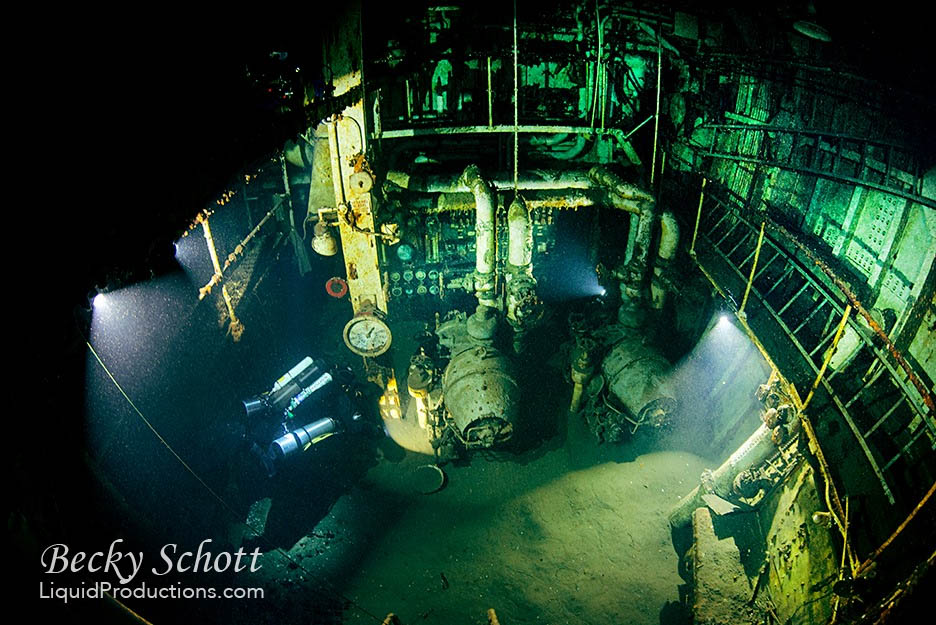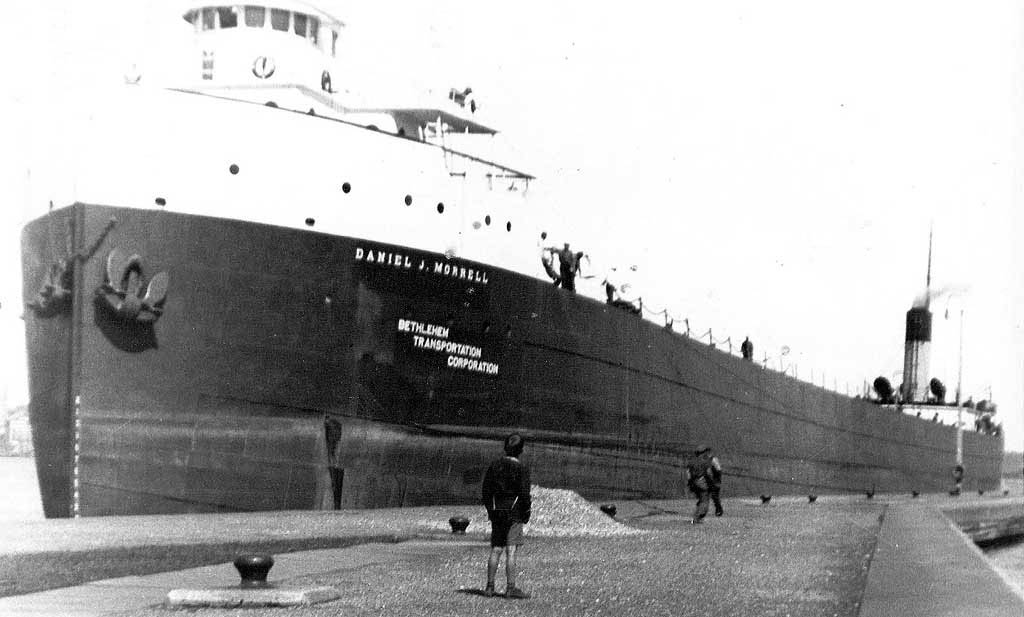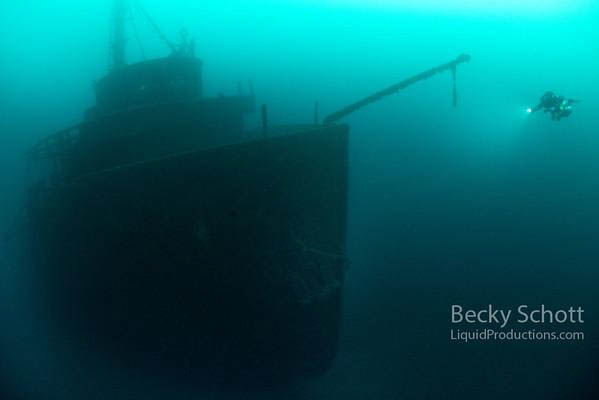November 29, 1966 on this day in history
Only Dennis Hale survived of the 29 crew members when the SS Daniel J. Morrell freighter broke in half and sunk off Harbor Beach (63 miles north of Port Huron, Michigan) in an unforgiving November Lake Huron storm. In the same storm, Sistership Edward Y. Townsend suffered a broken hull and was condemned when it arrived at Sault Ste. Marie, Ontario.
At first, investigators did not believe Dennis Hale’s account that the vessel broke in two at the water surface, and the stern continued under power until it finally sunk.
The SS Daniel J. Morrell was a 603-foot (184 m) Great Lakes freighter. The freighter was used for carrying bulk cargo such as iron ore, but when the 60-year-old ship sank, it was working with only ballast. Daniel J. Morell was designed and launched in 1906 by the West Bay City Ship Building Company, based in West Bay City, Michigan. Its tonnage was 7,239 GRT, was 603 feet long with a 58-foot beam and powered by 2 marine boilers.

Daniel J. Morrell was trapped in winds greater than 70 mph (110 km/h) and swells that topped the ship’s height 20 to 25 ft (6.1 to 7.6 m) waves in the last run of the season with her sister ship, Edward Y. Townsend. The Townsend made the decision to take shelter in the St. Clair River during the early morning hours, of November 29, 1966, leaving Daniel J. Morrell alone in the waters north of Pointe Aux Barques, Michigan, and attempting to head to the protection of Thunder Bay. The ship started her death throes at 02:00 am, forcing the crew onto the bridge, where many jumped in the 34 ° F (1 ° C) degree Lake Huron waters to their deaths. The ship’s hull broke at 02:15 am and thus water started to flood in. The remaining crewmen loaded into a raft.
There were shouts that a ship had been spotted off the port bow as the remaining crew waited for the ship to break up and the raft to be tossed into the lake from the bow of the Morell where the crew had boarded. Moments later it was discovered that not another ship was the looming target, but the aft portion of Daniel J. Morrell, barreling toward them under the power of the engine of the ship. With the rafts heading into the distance, the ship broke up.
In the words of author William Ratigan, the vessel’s remains vanished “like a great wounded beast with its head shot off into the night”.
The following afternoon, 30 November 1966 around 12:15 pm, Daniel J. Morrell was reported missing as she did not make her destination, Taconite Harbor, Minnesota. A “be on the lookout” warning was issued by the U.S. Coast Guard and several vessels and aircraft were deployed to search for the missing freighter.

A Coast Guard helicopter spotted the sole survivor, 26-year-old Watchman Dennis Hale, nearly frozen and floating in a life raft with the bodies of three of his crew members at about 4:00 pm on November 30, 1966. In freezing weather, Hale survived the nearly 40-hour ordeal wearing only a pair of boxer shorts, a lifejacket, and a pea coat.
Escaping the same fate as her sister ship, Edward Y. Townsend had been found to have a large crack in her deck that grew worse from the same storm. She was considered a complete loss, and for nearly two years she remained docked. Plans were made for the vessel to be towed to Europe for scrapping. On October 7, 1968, she was caught in a heavy storm off Newfoundland on her way to Europe, and snapped in two and sank in the approximate area where the RMS Titanic had sunk many years before.
Eventually, the remains of 26 of the 28 missing crewmen were recovered, in the days following the sinking. Some of the crewman bodies were not found till May of 1967. In May 1967, the two men whose bodies were never found were confirmed to be legally dead. On September 2, 2015, at the age of 75, Dennis Hale, the sole survivor of the sinking, died of cancer.
The significant factor in this loss was the disruptive force of the November seas and wind, on the Great Lakes as it was in several similar accidents which include the Edmund Fitzgerald and the Henry Steinbrenner. The Coast Guard investigation of Daniel J. Morrell’s sinking reported that she broke in half because of the brittle steel used in her hull, which was a “common problem” in ships constructed before 1948.

Daniel J Morrell remains intact and upright underwater. There are two sites for diving. At 130ft (40m), the bow can be reached, but both the bow and the stern rest at about 200ft on the bottom (61m). The mast, intact cabin, mushroom anchors and a long swim to where the ship broke in half are the signature features on the bow. The stern has just about everything to see as when it went down, lifeboats on the side, dishes in the galley, life ring down the stairs, and open engine room. The top of the deck features a double wheel and a smokestack.
This is an technical dive due to the depth, resting at 200 feet.






